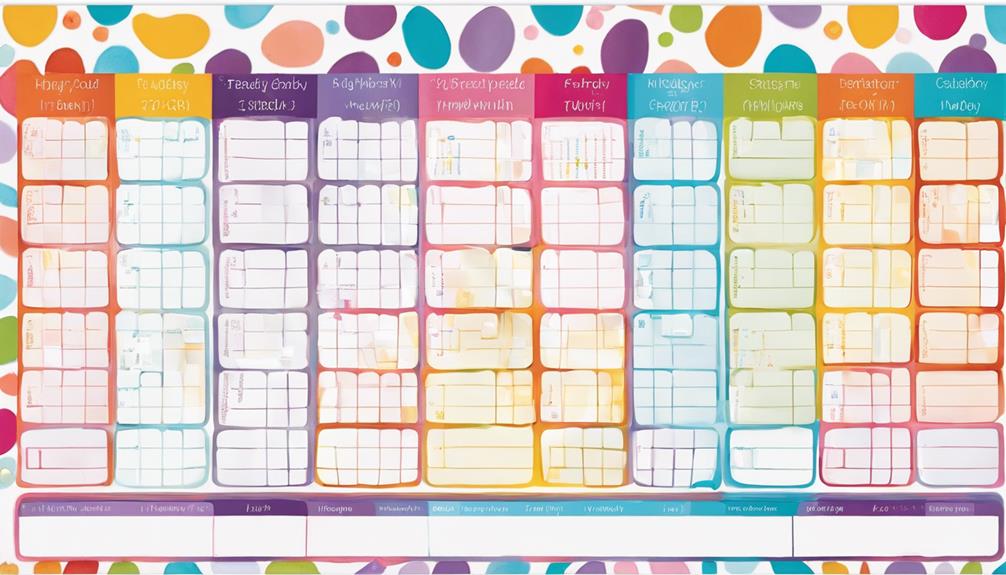Embarking on the journey to master the shallow latch in breastfeeding is like sailing uncharted waters with a knowledgeable captain at the helm.
The key to discovering successful breastfeeding lies in understanding the delicate dance between mother and baby, where even the subtlest adjustments can make a world of difference.
Let's explore how fine-tuning your latch can lead to a smoother sailing experience for you and your little one, ensuring a bond that transcends the challenges often faced in the early days of nursing.
Key Takeaways
- Early recognition of shallow latch signs is crucial for preventing issues.
- Encourage deep latch and skin-to-skin contact for better breastfeeding experience.
- Consider re-latching and seeking professional support to address latch problems effectively.
- Visualize techniques like the 'Flipple Technique' and hungry baby bird for improved latching success.
Understanding Shallow Latch Basics
Let's explore the basics of understanding a shallow latch and its implications on breastfeeding success. When a baby has a shallow latch, they only grasp the nipple during breastfeeding, which can lead to issues like nipple soreness, inadequate milk transfer, and even a decrease in milk supply. This can be a frustrating and painful experience for both the baby and the breastfeeding parent. However, by recognizing the signs early on and seeking support from lactation consultants, it's possible to overcome these challenges.
Improving latch techniques by encouraging the baby to open wide, promoting skin-to-skin contact, and aiming for a deep latch can make a significant difference. Visualizing a hungry baby bird can help achieve a deeper latch, ensuring a more comfortable and effective breastfeeding experience. Remember, it's okay to re-latch if needed and seek professional guidance to prevent further issues. With patience, practice, and the right support, successful breastfeeding is achievable.
Recognizing Signs of Shallow Latch
Recognizing signs of a shallow latch is important for ensuring a successful and comfortable breastfeeding experience for both the baby and the parent. When evaluating the latch, pay attention to the following signs:
- Baby unsatisfied: If your baby seems hungry or fussy even after a feeding session, it could indicate a shallow latch.
- Pinched nipple sensation: Feeling discomfort or pain like a pinching sensation on your nipple may signal a shallow latch.
- Clicks and smacks: Hearing clicking sounds or smacking noises during feeding can be a sign of a shallow latch.
Experiencing milk dribbling out, soreness, bleeding, or cracking can also indicate latch issues. Addressing these signs promptly to prevent further complications.
Techniques for Improving Latch Quality
Improving latch quality is essential for a comfortable and successful breastfeeding experience for both parent and baby. To enhance the latch, consider starting with skin-to-skin contact, which can promote better latch quality by helping your baby feel secure and connected.
Visualizing a hungry baby bird can encourage a deep latch, where the mouth covers more of the areola. Experimenting with different breastfeeding positions, such as the football or cradle hold, can also improve latch technique and comfort.
One helpful technique is the 'Flipple Technique,' which involves gently flipping your baby's upper lip outward before latching to achieve a deeper latch. If you notice a shallow latch, don't hesitate to unlatch and try again.
Common Challenges and Solutions
Facing challenges with breastfeeding can be overwhelming, but with the right knowledge and support, solutions can be found to improve the experience for both parent and baby. One common challenge is a shallow latch, which can lead to discomfort and inadequate feeding. To address this issue effectively, it's essential to focus on techniques that promote a good latch and make sure the baby's mouth is properly positioned.
Here are some key strategies to overcome common breastfeeding challenges:
- Utilize skin-to-skin contact to promote a deeper latch.
- Practice visualizing a hungry baby bird to encourage the baby to open wide for a better latch.
- Consider re-latching if the initial latch isn't ideal to prevent nipple pain and make sure proper milk transfer.
Advanced Latching Strategies
Addressing challenges with breastfeeding can be intimidating, but by incorporating advanced latching strategies, parents can enhance their baby's feeding experience and promote better milk transfer. Advanced latching strategies encompass various techniques aimed at achieving a deeper and more effective latch. One such technique is the 'Flipple Technique,' which involves flipping the baby's upper lip outward before bringing them to the breast, aiding in a better latch. Additionally, asymmetrical latch techniques can help position the baby for a deeper latch, optimizing milk transfer.
Visual aids like the hungry baby bird visualization can assist parents in guiding their baby to latch deeply, ensuring a more efficient feeding session. Exploring laid-back breastfeeding positions can also encourage a more effective latch by allowing gravity to assist the baby in achieving a deeper latch.
For personalized guidance on advanced latching strategies, seeking support from a lactation consultant can be invaluable. Their expertise can provide tailored techniques for mastering the shallow latch, ultimately leading to a more successful breastfeeding journey.
Frequently Asked Questions
How Can I Improve My Shallow Latch While Breastfeeding?
Let's work on improving our shallow latch together. Unlatch, reposition, and try again for a more comfortable feeding experience. Remember, skin-to-skin contact and visualizing a hungry baby bird can help guide your little one to latch deeper.
Can Baby Get Enough Milk With a Shallow Latch?
Oh, dear soul, with a shallow latch, the baby might struggle to get enough milk. It's a tough road. Seek help, fix the latch, nourish the babe. Lactation consultants can be our guiding stars in this Milky Way journey.
How Do I Get a Deeper Latch for Nursing?
To achieve a deeper latch for nursing, we focus on proper positioning, attachment, and visualizing a hungry baby bird. If the latch is shallow, unlatch and try again using deep latch techniques for successful breastfeeding.
Is Shallow Latch Oversupply?
Shallow latch is not oversupply. It's about how baby attaches to breast. Shallow latch can cause pain, poor feeding. Oversupply brings other issues. Both need right latch for success, no matter milk amount. We're here to help.
Conclusion
To summarize, mastering the shallow latch is key to successful breastfeeding. By understanding the basics, recognizing signs, and using techniques to improve latch quality, you can overcome common challenges and achieve a comfortable feeding experience.
Remember, as the saying goes, 'a good latch is worth a thousand words.' Seek support, practice patience, and trust in your ability to nurture your baby through breastfeeding. You've got this!










